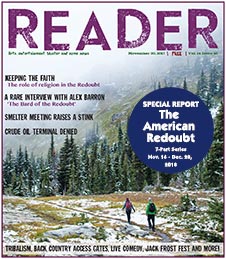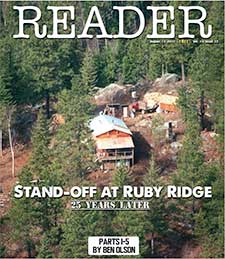Putting heartbeats downtown
By Sandpoint Mayor Jeremy Grimm
Reader Contributor
Some recent public discussion surrounding parking and proposed downtown housing reflects how deeply Sandpoint residents care about our downtown core. I respect and appreciate that passion — it’s a sign that our community remains engaged and invested in our future.
However, it’s important to provide some perspective and clarify why Sandpoint’s downtown is exempt from off-street parking requirements — and why that’s a deliberate planning policy rooted in sound, long-term thinking.
More than a decade ago, in 2009, when serving as Sandpoint’s Planning a Community Development director, I led an effort to eliminate downtown parking mandates to remove barriers to reinvestment and revitalization. At the time, more than a third of our ground-floor spaces sat vacant and then, as today, we had plenty of off-street parking. Requiring every project to include off-street parking made it nearly impossible to bring those buildings back to life. Since then, our walkable, building-rich downtown has rebounded — and that’s no accident.
People don’t visit downtowns for parking lots; they come for buildings, experiences and community.
Surface parking may be necessary, but it doesn’t create charm, economic activity or tax revenue. Buildings do. Walkable downtowns filled with businesses, shops and housing are proven to generate stronger economies and a higher quality of life.
We can see this playing out in real-time: During the current closure of the downtown parking lot for refurbishment, roughly 127 vehicles have shifted to on-street parking — and ample capacity still exists.
Parking at the curve along the ITD right-of-way remains mostly open and, even at midday, spaces are regularly available along Church, Oak, Cedar and Second through Fourth avenues. This underscores that Sandpoint has a flexible, resilient parking capacity. When people walk from their parking spot to their destination, they have the chance to actually immerse themselves in the fabric of the town, which at times results in a chance conversation, bumping into a long-lost friend or eyeing a perfect gift in a window display.
Beyond parking, this conversation is ultimately about how we want our downtown to feel. Other than Friday and Saturday nights, downtown often empties when the workforce goes home at 5 p.m. The best way to bring consistent energy, safety and life to our core is to put heartbeats downtown — by welcoming residents who live, work, walk, shop and dine there.
Adding housing creates a customer and an employee base for local retailers and restaurants, entertainment venues, supports extended business hours, and enhances safety and community connection through passive activity.
In a broader sense, encouraging more people to live downtown also supports my critical economic goal for Sandpoint’s future: diversifying beyond a tourism-based economy.
While visitors will always be an important part of our town, we must build a stronger foundation rooted in year-round residents, local businesses, and everyday commerce. A vibrant, lived-in downtown strengthens Sandpoint’s resilience and economic stability — creating a community that thrives not just during tourist seasons, but every day of the year.
Downtown housing — with its smaller, more affordable units — supports that vision. It adds housing for workers, young professionals, and others who want to live where they can walk or bike to daily needs. Many of Sandpoint’s most beloved buildings — from Kochava to McDuff’s, The Hive, Joel’s, The Winery/Fat Pig and the Cedar Street Bridge — also provide no or limited off-street parking. They are possible because of our supportive downtown parking policy.
Let’s also recognize that downtown Sandpoint is not Ponderay. Our core is defined by historic scale, walkable blocks and unique local character. Ponderay is dominated by large parking lots and big-box stores. We should not impose suburban parking models on a historic town center where buildings and people — not cars — are what make the place.
Requiring off-street parking for every new building imposes immense costs, discourages redevelopment and often makes housing less affordable. It’s not a formula for vibrancy — it’s a formula for stagnation.
That said, I fully acknowledge that as Sandpoint continues to grow, the time may come when structured parking — such as a parking garage — becomes necessary. But we must be honest about the costs: Even a modest $15 million facility would require more than $600,000 in annual parking revenue just to cover the debt. Until there is sustained, demonstrated demand for off-street parking — and broad public willingness to pay for it — such an investment would be fiscally irresponsible.
Arbitrary parking mandates can stifle investment, raise housing costs and undermine walkable, vibrant town centers. I believe Yogi Berra said it best: “Nobody goes there anymore. It’s too crowded.” Given the options, I’m 100% in favor of a crowded downtown — not just during a few weeks in the summer, but all year round.
Jeremy Grimm has served as Sandpoint mayor since 2024, served as Sandpoint city planner from 2007-2015 and is owner/land use planner at Whiskey Rock Planning + Consulting.











 Coming up this week! Don’t miss Live Music, the Summer Sampler, the Art Party, Monarch Grind, the Sandpoint Renaissance Faire, and more! See the full list of events in the
Coming up this week! Don’t miss Live Music, the Summer Sampler, the Art Party, Monarch Grind, the Sandpoint Renaissance Faire, and more! See the full list of events in the 